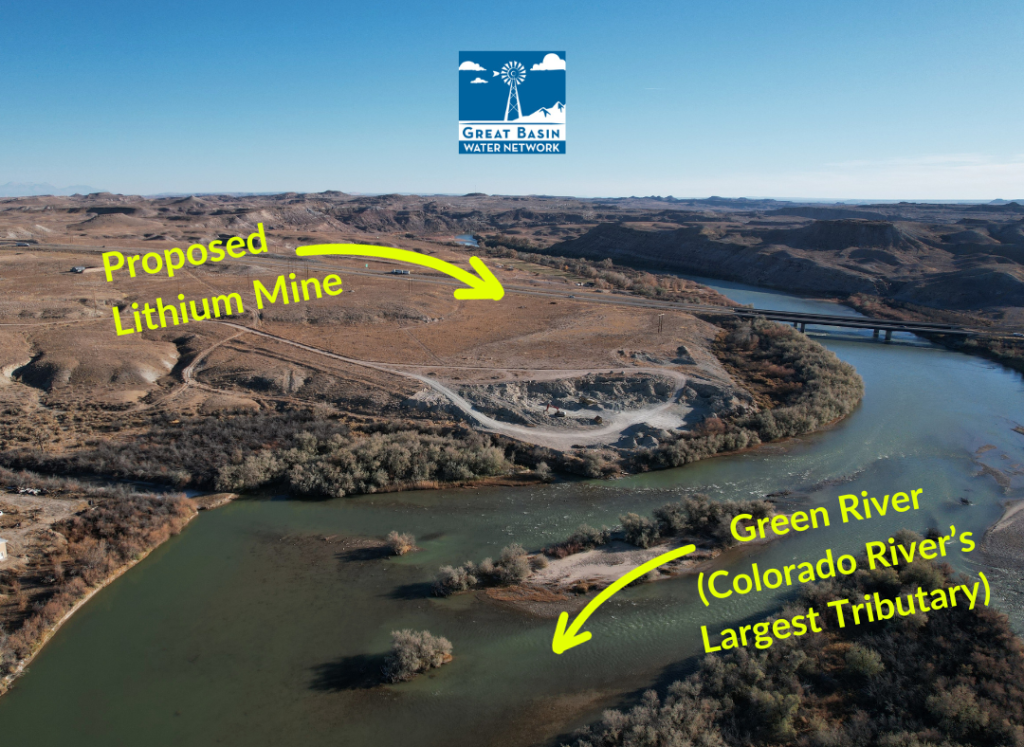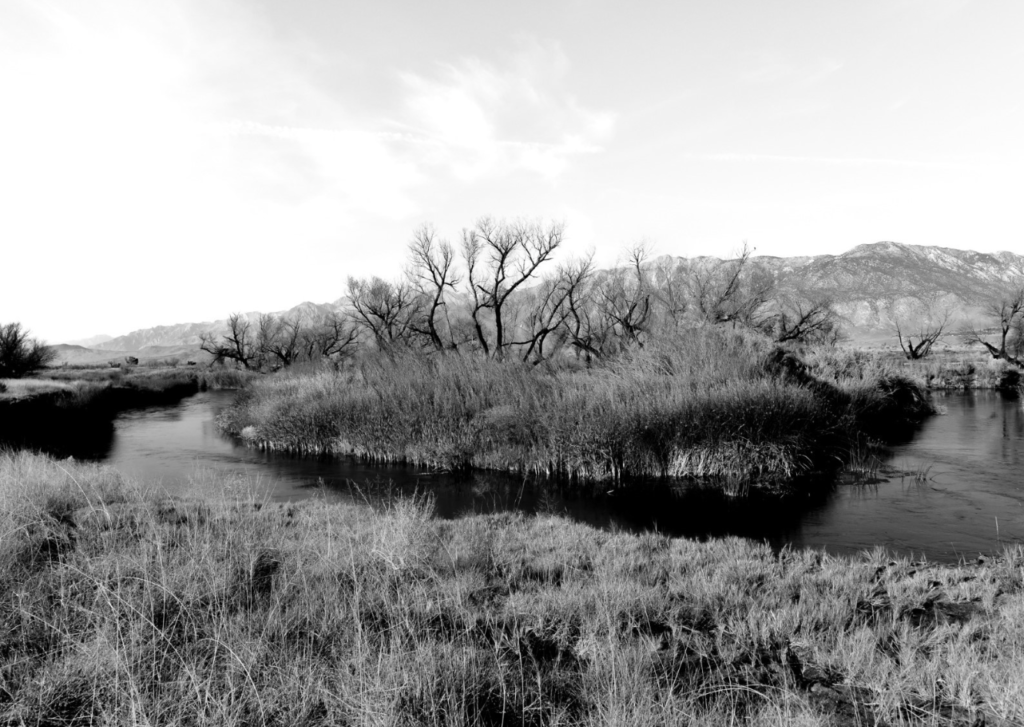
Sign Our Petition: Foreign Companies Want to Cash In On the Lithium Rush with the Colorado River System
We show up for the water resources we vow to protect.
On Tuesday, weeks after submitting a formal protest, we attended a hearing on Blackstone Minerals’ filing for water rights in Green River, UT –– opposing the company’s application for groundwater rights near the banks of the largest tributary in the Colorado River System.
Blackstone Minerals, a subsidiary of the Australian company Anson Resources, and other related LLCs are looking to acquire the Green River water rights and others as part of the growing “Paradox Project” — a major lithium extraction and exportation effort seeking rights to 11 billion gallons (30,000 afy) of Colorado River and Colorado River Tributary water each year. Anson’s major partner is Sunresin, a Chinese company.
Anson’s efforts are a means to appropriate water to foreign companies with local LLCs. But, of course, it takes a village. There are leases for water with Wayne County Water Conservancy District and at least one private company. And, at least one private company with ties to Green River has sold land to Anson entities.
We are working with local farming families who believe that some of those companies selling and leasing land to Anson might have ties to elected officials in the county.
Along with the effort near the town of Green River, there are plans to extract and process lithium – and consume precious water –– near Canyonlands National Park and Capitol Reef National Park. The applications, filed with the Utah Division of Water Rights, are a mix of new, consumptive uses and, alleged, non-consumptive uses. The company plans to use Direct Lithium Extraction (DLE) technology, which will theoretically consume less water. However, this has yet to play out in practice. There are no permitted DLE projects in the United States. As such, DLE technologies still need to be considered speculative.
Here’s where things get a little complicated.
Anson and its subsidiaries want to drill up to 10,000 feet deep to extract lithium salt brines at the site in Green River and the site near Canyonlands. In both cases, the wells are quite close to the Green and Colorado Rivers.
For the Green River Project, the company pinky swears and spit shakes that it will not consume water. It says there is no connectivity to the river and no chance that the brines mix with freshwater supplies. Anson/Blackstone says it will just bring the water to the surface, take the lithium, and re-inject the water back into the ground in real time in a closed loop system –– with no losses.
Those promises will have big consequences if broken.
Regulators are in a difficult position. They are being asked by Anson to take their word for it. If regulators were to believe Anson, that would make life much easier for the Australian company. There are specific state policies regarding new consumptive appropriations in the Green River and Colorado River systems in Utah. A consumptive use would require a lot more work –– and money –– on behalf of Anson.
And, again, these non-consumptive uses have never been done at a lithium mine in the U.S. And, I would think most Americans would agree, the Colorado River’s largest tributary is not a place for experimentation.
Who is going to blink.
We are not against lithium extraction, but as with all major water projects in the desert and on the Colorado River system, we need to be asking fundamental questions about water availability, impacts to existing rights holders, and potential harms to the public welfare and local communities. That is what the law requires. And the law is what we are here to defend.
Now, we need your help. Please sign our petition to demand accountability from regulators. Because of due process concerns we noted to the Utah State Engineer, regulators are extending the public protest period.
Sign our petition and we will ensure that your voice is a part of the record.

Great Basin Water Justice Summit
Earlier this month, we had the pleasure of co-hosting the Great Basin Water Justice Summit with Friends of the Inyo, the Owens Valley Indian Water Commission and the Eastern Sierra Land Trust. We shared our perspective on demanding accountability from government regulators, heard about the infeasibility of mitigation projects imposed on our friends in Payahunadu (Owens Valley), and looked forward –– thinking about how we can collectively act to ensure big corporations and big government entities follow the law.
Owens Valley is ground zero for dangerous exportation projects and injustices to tribal communities. What happened there – namely, water colonization by the city of Los Angeles at the expense of the local people and ecosystems – is exactly what we’re trying to prevent everywhere else in the west. We are committed to working together with our partners in that region of the Great Basin to continue to uplift the long history of people living there sustainably.
As we always said during the SNWA pipeline fight: Remember Owens Valley. We will never forget. And we will be there to support folks in the community for many years to come.
Saving Water or Repurposing?
A new bill proposed in Utah for the 2024 legislative session seeks to address pitfalls of the western “use it or lose it” water laws by enshrining a beneficial use for “saved water” in state code. The legislation, filed by Senator Sandall, would allow agricultural water users to file a change application on their water rights to quantify the amount of water saved through increased efficiencies like the agricultural optimization program and other means of reducing water use, or to allow for other beneficial uses of that “saved water.”
Following a rulemaking process, the bill would empower the state engineer to either give part of a user’s “saved water” to another user, reappropriate it, or actually save it.
Under the current law, there’s a disincentive for agricultural producers to upgrade to water-saving technology as they run the risk of losing any water they don’t use. While this bill cleans up those incentives, merely sorting out how to account for “saved water” on paper doesn’t translate to actual conservation — it’s more of a regulatory change to how we’re accounting than anything else
At GBWN, we constantly ask ourselves whether people are truly saving water, or whether they’re simply repurposing — like Las Vegas, who touts its turf-removal savings as it continues to sprawl outward with new subdivisions, business parks and industrial zones.
On its face, this is not a bad bill, but we need to be sure that Utah regulators aren’t falling into the rhetorical trap where we conflate repurposing water with water that is acutally conserved ie no longer used for any purpose.
We cannot continue to feed a system of unsustainable consumption. We must do the hard work to truly cut use. If the bill does ultimately pass, we need to hold regulators accountable for finding long-term savings and keeping community water use within our deserts’ limits.
